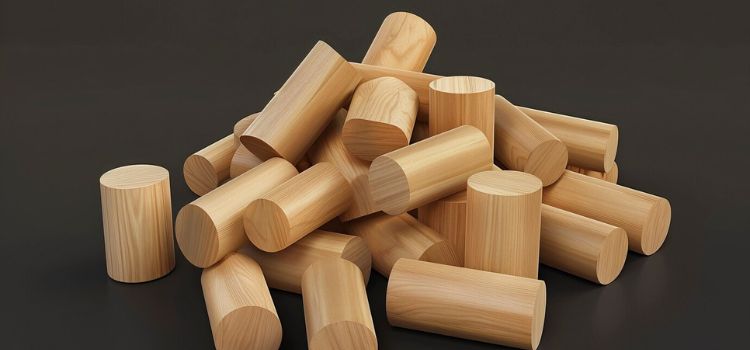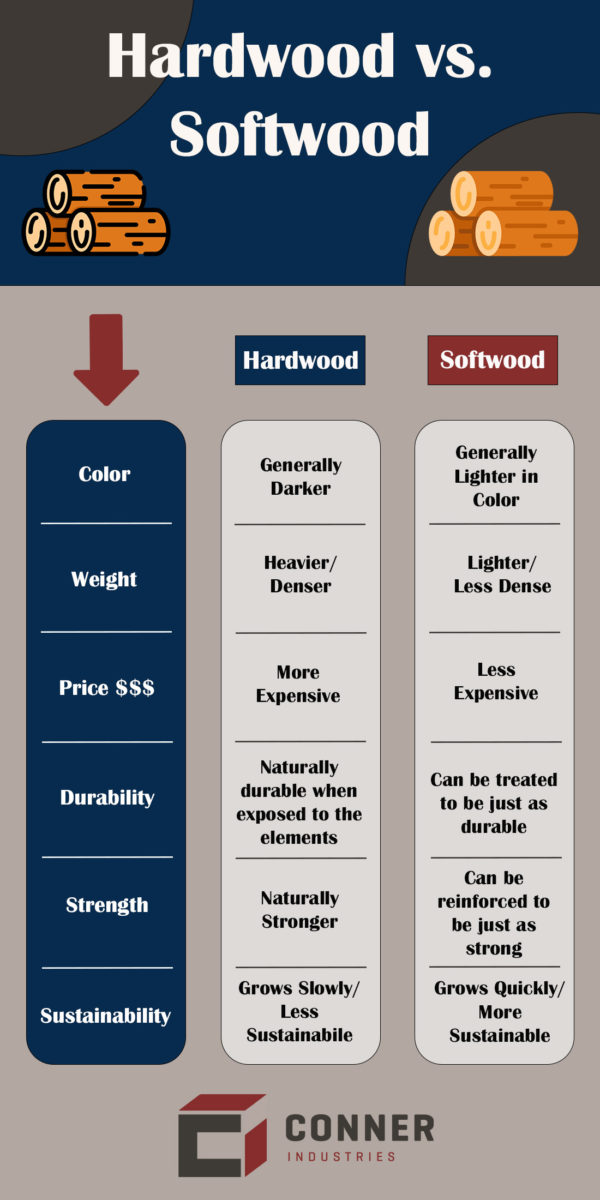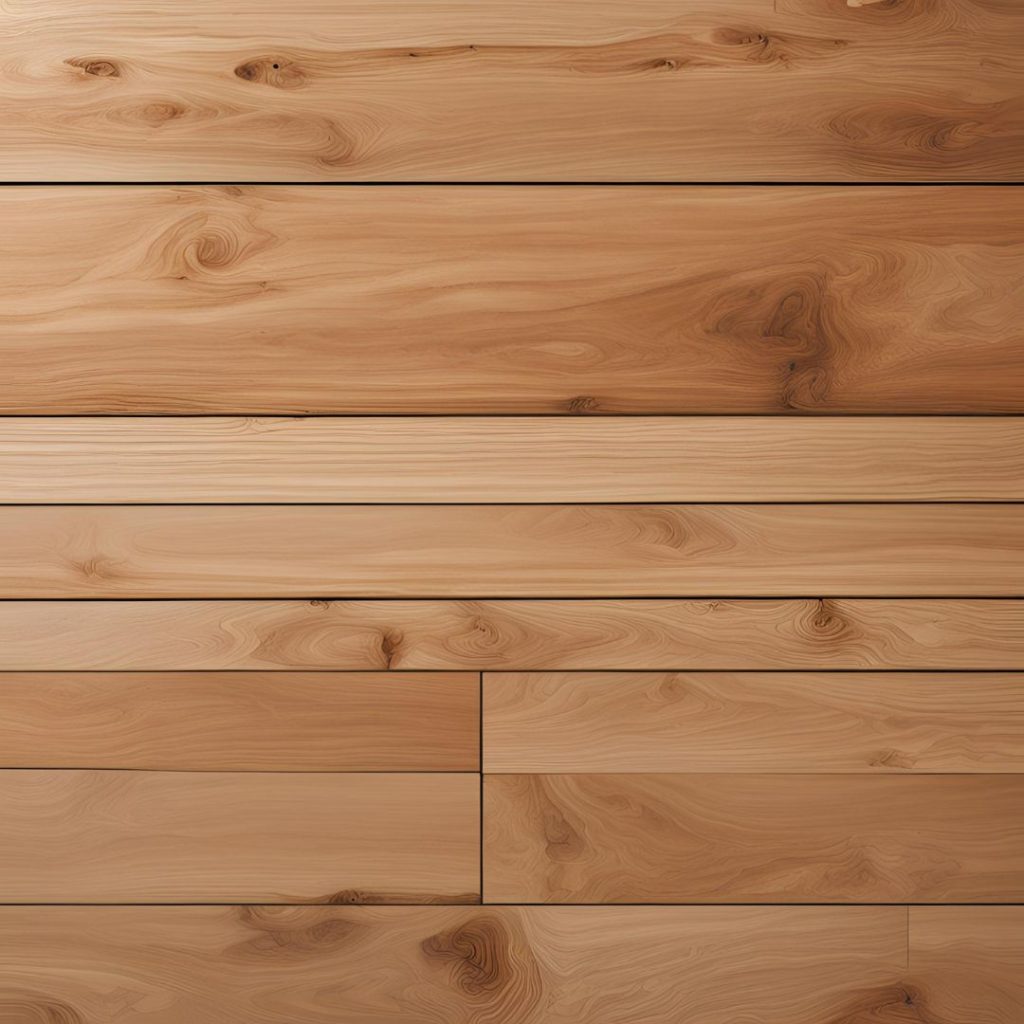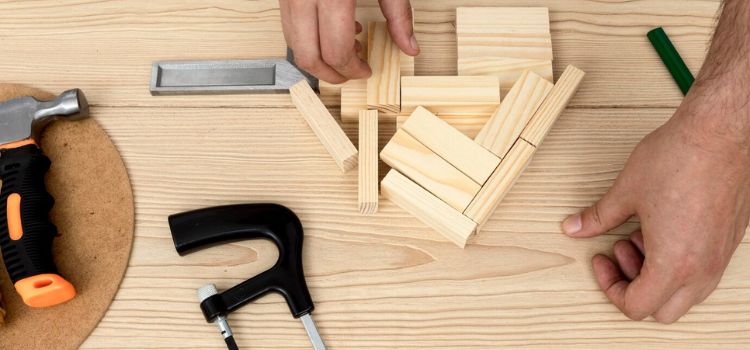Trees that shed their leaves every year to deciduous trees provide hardwood. Softwood is derived from coniferous trees, which usually remain evergreen.
Understanding hardwood and softwood is essential for various applications, from construction to furniture making. Hardwood species, like oak and maple, are often recognized for their durability and grain patterns, making them popular for flooring and high-quality furniture.
On the other hand, softwood species such as pine and cedar are generally lighter and more pliable, which makes them suitable for products like paper, cladding, and inexpensive furniture. Both types of wood have unique characteristics that cater to specific needs and preferences. Knowing these distinctions can guide consumers and professionals in choosing the suitable material for their projects.

What Is The Difference Between Hardwood And Softwood?
Choosing a suitable wood for a project is crucial. Hardwood and softwood differ in ways that affect their use and durability. Let’s explore these differences.
Botanical Differences:
- Hardwood comes from deciduous trees, which shed leaves annually.
- Softwood comes from conifers, which usually remain evergreen.
Seed Structure:
- Hardwoods have seeds with a covering.
- Softwoods have seeds without a covering, often in cones.
Growth Time:
- Hardwoods grow slower than softwoods.
- Softwoods grow faster.
Density and Hardness:
| Wood Type | Density | Hardness |
|---|---|---|
| Hardwood | Higher Density | Typically Harder |
| Softwood | Lower Density | Typically Softer |
Uses:
- Hardwoods are often used for furniture, flooring, and decks.
- Softwoods are used for framing, construction, and paper.
Grain Pattern:
- Hardwoods have a varied grain pattern.
- Softwoods have a more uniform grain pattern.
Cost:
- Hardwoods are typically more expensive.
- Softwoods are more affordable.
You can select the right wood for any job by being aware of these variations.

Credit: www.connerindustries.com
What Are The Characteristics Of Hardwood?
Exploring the world of woods, hardwood stands out for its unique traits. These woods come from trees that lose their leaves annually. Unlike their softwood cousins, hardwoods offer a blend of beauty and resilience. Let’s delve into the specific characteristics that set hardwood apart.
Origin
Hardwoods originate from deciduous trees. These trees shed leaves yearly. They grow slower than softwoods. This slow growth contributes to their overall density and durability. Common hardwood trees include oak, maple, and walnut.
Density
One of hardwood’s key traits is its high density, which makes it heavy and solid. Because of this, hardwood is an excellent choice for furniture and flooring. It resists dents and wears over time.
Appearance
Hardwood’s appearance is often rich and varied. It showcases distinct grain patterns and warm colours. With its unique texture and hue, each piece can become a statement.
Durability
Hardwoods are known for their durability. They stand up well to daily use. This makes them perfect for high-traffic areas in homes and offices. With proper care, hardwood products can last for generations.
What Are The Characteristics Of Softwood?
Softwoods are popular materials in construction and crafting. They come from coniferous trees, which usually have needles and cones. Selecting the right wood for your project can be made easier if you are aware of its properties..
Origin
Softwoods originate from trees known as gymnosperms. These trees are fast-growing, making softwoods more abundant and affordable than hardwoods. Common examples include pine, cedar, and spruce.
Density
Softwoods are less dense than hardwoods. This makes them lighter and easier to work with. Their lower density also means they are less strong, which is essential to consider for structural projects.
Appearance
The appearance of softwoods can vary. They generally have a lighter color and a more uniform texture, making them ideal for projects where a light, clean look is desired.
Durability
Although hardwoods are much stronger than softwoods, they can still last long if properly treated and maintained. Cedar, for example, is known for its resistance to rot and insects.
| Wood Type | Density | Typical Uses |
|---|---|---|
| Pine | Low | Furniture, frames |
| Cedar | Low to Medium | Outdoor projects, shingles |
| Spruce | Low | Construction, paper |
What Are The Uses Of Hardwood And Softwood?
Exploring the diverse applications of hardwood and softwood unveils a world where each type of wood holds its unique role. From sturdy furniture to delicate paper, these materials shape our daily lives. Understanding their unique uses can guide us in choosing the suitable wood for our projects.
Hardwood Uses
Hardwoods, known for their durability and resistance, are often the go-to for items that need to last. Below are common uses:
- Furniture: Desks, chairs, and wardrobes benefit from hardwood’s strength.
- Flooring: Oak and maple floors offer long-term durability.
- Cabinetry: The fine grain of hardwood makes for beautiful cabinets.
- Construction: Structural elements like beams rely on hardwood’s sturdiness.
- Musical Instruments: Pianos and violins need hardwood for quality sound.
Softwood Uses
Softwoods are prized for their versatility and workability. They serve many purposes, such as:
| Use | Description |
|---|---|
| Construction | Softwoods like pine are used for walls and framing. |
| Outdoor Structures | Decking and fencing utilize softwood for its ease of use. |
| Window Frames | Softwoods are common in window frame production. |
| Paper | Pulp from softwoods makes various paper products. |
| Christmas Trees | Firs and pines are popular choices for holiday decor. |
Which Is Better For Furniture: Hardwood Or Softwood?
Choosing a suitable wood for furniture can take time and effort. Both hardwood and softwood have unique traits. Your choice depends on the furniture’s purpose and your style. Let’s compare both to see what’s best for furniture.
Hardwood
Hardwoods come from deciduous trees. They are denser and more durable than softwoods. This makes them ideal for furniture that lasts. Here are some key points:
- More resistant to scratches: Great for tables and chairs.
- Heavier: Adds sturdiness to furniture.
- Rich colours and textures: Offers a premium look.
Common hardwoods for furniture include Oak, Maple, and Cherry.
| Hardwood Type | Durability | Appearance |
|---|---|---|
| Oak | Very Strong | Grainy Texture |
| Maple | Strong | Light Color |
| Cherry | Medium | Darkens Over Time |
Softwood
Softwoods come from coniferous trees. They grow faster than hardwoods. This often makes them less expensive. Here are some key points:
- Lighter in weight: Easy to move and handle.
- Softer: Easier to cut and shape.
- Versatile: Good for a variety of styles.
Popular softwoods for furniture include Pine, Cedar, and Spruce.
| Softwood Type | Hardness | Usage |
|---|---|---|
| Pine | Soft | Cabinets, Beds |
| Cedar | Relatively Soft | Outdoor Furniture |
| Spruce | Soft | Paneling |
Both hardwood and softwood have their benefits. The best choice depends on the purpose of your furniture. Think about durability, cost, and style before deciding.
Which Is Better For Construction: Hardwood Or Softwood?
Choosing a suitable wood for construction is crucial. It affects your project’s cost, durability, and appearance. Two main types of timber exist: hardwood and softwood. Both have unique benefits for construction. Let’s explore which might be the better option.
Trees that shed their leaves every year to deciduous trees provide hardwood. Common hardwoods include oak, maple, and walnut. Softwood comes from coniferous trees. These trees have needles and cones. Examples include pine, spruce, and cedar.
| Feature | Hardwood | Softwood |
|---|---|---|
| Density | High | Low to Medium |
| Strength | Strong | Varies |
| Durability | Long-lasting | Less durable than hardwood |
| Cost | More expensive | More affordable |
| Workability | Harder to work with | Easier to work with |
| Main Uses | Flooring, Furniture | Framing, Sheathing |
- Hardwood is ideal for floors and high-quality furniture.
- Softwood is best for structural frames and outdoor decks.
Hardwoods are tough and durable, resisting wear and tear. Softwoods are lighter and cheaper, easier to cut and shape.
The choice between hardwood and softwood depends on the project. For heavy-duty construction or fine furnishings, hardwood may be the better choice. For general framing and budget-friendly projects, softwood is often preferred.
- Consider hardwood for areas with heavy use.
- Choose softwood when working with a tight budget.
- Think about the climate. Some woods handle moisture better.

Which Is More Sustainable: Hardwood Or Softwood?
Choosing between hardwood and softwood is not just a matter of strength and aesthetics. It’s also about sustainability. Let’s dive into which type of wood is kinder to our planet.
Hardwood comes from deciduous trees. They grow slowly. This slow growth makes hardwood dense and durable. Yet, it means they take longer to replace. Hardwoods like oak, maple, and walnut are common in high-end furniture and flooring.
Softwood comes from coniferous trees. These trees grow fast. Softwoods like pine, cedar, and spruce are popular for construction. They are easier to replenish. This makes them seem more sustainable.
But it’s more complicated. Let’s look at some points:
- Regrowth rate: Softwoods grow back quicker than hardwoods.
- Management: Many softwood forests are sustainably managed.
- Longevity: Hardwood products often last longer.
Lifecycle analysis is essential. It measures the impact from harvesting to end-of-life. Products that last longer may be more sustainable, even if they take longer to grow back.
Here’s what to consider:
| Wood Type | Regrowth | Product Lifespan | Sustainable Management |
|---|---|---|---|
| Hardwood | Slow | Long | Varies |
| Softwood | Fast | Shorter | Often |
Remember, the choice depends on the source and usage. Both types can be sustainable with the proper practices. Look for certifications like FSC or PEFC.
What Are The Environmental Consequence Of Using Hardwood And Softwood?
Choosing between hardwood and softwood impacts our planet. In the ecosystem, trees are crucial and their use in construction and furniture affects forests and wildlife. Let’s explore how hardwood and softwood usage can have different environmental footprints.
Deforestation
Using wood for our needs can lead to deforestation. This is the cutting down of trees without replanting new ones. Hardwood trees like oak and mahogany take longer to grow. This means they are not replaced as quickly as softwoods like pine and cedar.
Carbon Footprint
Trees absorb carbon dioxide, a greenhouse gas. When they are cut down, that carbon is released. Hardwoods store carbon for longer periods as they grow slowly. Softwoods grow faster but might hold less carbon over time.
Habitat Destruction
Forests are homes to animals and plants. Cutting trees down can destroy these habitats. Hardwood forests are often rich in biodiversity. Softwood plantations can be more managed, but still disrupt local ecosystems.
- Hardwood:
- Longer growth time
- More carbon storage
- High biodiversity loss
- Softwood:
- Shorter growth time
- Less carbon storage
- Managed plantations
Which Is More Expensive: Hardwood Or Softwood?
Choosing between hardwood and softwood for a project is a big decision. One major factor is cost. Understanding which is more pricey can guide your choice. Let’s dive into the details and compare the two.
Cost Comparison
Hardwood generally costs more than softwood. The reasons are clear:
- Hardwood takes longer to grow, which adds to the cost.
- It’s often more durable and denser than softwood.
- Hardwoods like oak, maple, and cherry are high in demand for furniture and flooring.
Softwoods like pine, cedar, and spruce are more affordable. They grow faster and are easier to source.
| Wood Type | Average Cost |
|---|---|
| Hardwood | More expensive |
| Softwood | Less expensive |
Availability Comparison
Availability affects the price of wood. Here’s what you need to know:
- Hardwoods are less common than softwoods.
- Softwoods are more readily available, which can reduce costs.
Seasonal changes and geographic location also influence availability. This impacts the price you pay.
For example, it will cost less in regions where softwood is abundant. Conversely, in areas where hardwoods thrive, they might be less expensive than imported softwoods.
Credit: www.garrisoncollection.com
What Are The Maintenance Requirements For Hardwood And Softwood?
Understanding the upkeep of hardwood and softwood is crucial for longevity and aesthetics. Hardwood often demands refinishing and regular cleaning, while softwood may need more frequent protection from dents and scratches.
Maintaining your wood surfaces ensures longevity and beauty. Let’s break down the essentials for hardwood and softwood care.
Hardwood Maintenance:
- Regular Cleaning: Regularly clean or vacuum to get rid dirt and debris.
- Moisture Control: Wipe spills immediately to prevent water damage.
- Use Proper Cleaners: Employ pH-neutral cleaners specifically for hardwood.
- Refinishing: Consider sanding and refinishing every 10 years to rejuvenate the surface.
Softwood Maintenance:
- Gentle Cleaning: Use soft brushes or cloths to avoid scratches.
- Stain Prevention: Apply sealants annually to protect against stains and moisture.
- Regular Checks: Look for indications of wear or damage and address promptly.
- Avoid Heavy Loads: Prevent dents by avoiding heavy furniture without proper support.
Comparison of Maintenance Tasks
| Task | Hardwood | Softwood |
|---|---|---|
| Cleaning Frequency | Weekly | Bi-Weekly |
| Moisture Sensitivity | High | Very High |
| Refinishing | Every 10 years | As needed, based on wear |
Maintaining wood requires attention to detail and consistent care. Use the right tools and techniques to ensure your wood stays beautiful for years.
Which Is More Resistant To Pests And Decay: Hardwood Or Softwood?
Exploring the durability of hardwood versus softwood reveals key differences. Generally, hardwoods are more resistant to pests and decay than softwoods, making them a preferable choice for longevity and maintenance.
Choosing between hardwood and softwood for your project is crucial. Resistance to pests and decay often tops the list of considerations. Each wood type has its own strengths.
Hardwood comes from deciduous trees. These trees grow slowly. This results in dense and strong wood fibres. Dense fibres in hardwood make it challenging for pests to infiltrate. Hardwoods like oak and teak have natural oils. These oils prevent rot and repel insects.
Softwood, from coniferous trees, grows quickly. It has a lighter, more porous structure. Softwoods are more susceptible to pests and decay. But, some softwoods like cedar have natural compounds. These compounds fend off bugs and resist moisture.
| Wood Type | Pest Resistance | Decay Resistance |
|---|---|---|
| Hardwood | High | High |
| Softwood | Variable | Variable |
- Hardwoods are less prone to damage from pests.
- Softwoods may need chemical treatments for protection.
- Inspect wood for quality before purchase.
- Consider the wood’s origin and treatment.
- Choose hardwood for areas prone to pests and moisture.
Ultimately, hardwoods tend to be more resistant to pests and decay. Yet, some softwoods can also perform well with the proper treatment and care.
Conclusion
Deciding between hardwood and softwood depends on your project’s needs. Hardwood offers durability and a rich aesthetic, ideal for long-lasting furniture. Softwood, often more affordable and accessible to work with, suits construction projects well. Consider these factors to choose the best wood for your endeavour, ensuring a successful outcome that stands the test of time.
Frequently Asked Questions (FAQ) On Hardwood vs. Softwood: Which is Better for Your Next Project?
Which Is Better Softwood Or Hardwood?
Neither softwood nor hardwood is universally better; the choice depends on the project. Softwoods, typically from conifers, are generally cheaper and easier to work with, making them ideal for construction and furniture. Hardwoods from deciduous trees are durable and preferred for flooring and high-quality furniture.
Is Pine Hard Or Softwood?
Pine is classified as a softwood, commonly used in construction and furniture making due to its softer texture compared to hardwoods.
Is A 2×4 Hardwood Or Softwood?
A 2×4 can be either hardwood or softwood, depending on the tree it comes from. Softwood 2x4s, typically from pine or spruce, are common in construction. Hardwood 2x4s, from trees like oak or maple, are less common and often used for specific projects.
Is Oak A Hardwood Or Softwood?
Hardwoods like oak are prized for their sturdiness and strength. It’s widely used in furniture, flooring, and construction.
As an Amazon Associate, I earn from qualifying purchases

